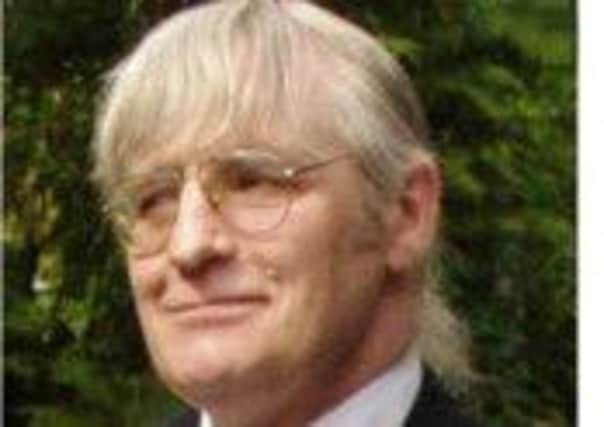Obituary: Robin Turner, entrepreneur, diver and climber


Had it not been for a dose of glandular fever Robin Turner’s career could quite possibly have taken a very different course.
For after studying maths for several years at the University of Edinburgh, he was felled by the viral infection which prevented him from sitting his final exams. Yet despite the lack of his degree, he eventually went on to put his mathematical mind to expert use in the design and installation of mooring systems around the world – but not until after a string of working experiences had led him on a career from computing to clam diving.
Advertisement
Hide AdAdvertisement
Hide AdThroughout it all, his love of the great outdoors was dominant as he sought adventure on the hills, in caves and at sea, becoming an early member of Glencoe Mountain Rescue Team and once surviving down a pothole for several days.
He was born in Shipley; his father Robert was originally from Aberdeenshire and his mother Winifred had a heritage embracing both Yorkshire and France and an inventive streak – his great-great-great-great-grand-father on his mother’s side was reportedly James Hargreaves, credited with inventing the spinning jenny.
Turner was educated at St Bees School in Cumbria, where he was involved in various sports including rugby, swimming and gymnastics, and was also a member of the climbing group.
From there he went up to Edinburgh but, having been unable to complete his studies, he subsequently worked for a while with British Aluminium before going to college in Bradford in the 1960s to study computing.
He was an early computer programmer but his passion for the outdoors took over each weekend when, after finishing work on a Friday, he would ride his motorbike up to the Western Highlands of Scotland.
When he decided he wanted to climb as much as possible he moved to Glencoe, where he lived in a small cottage in the village and financed his lifestyle with a job with a road team.
There he became one of the early members of the Glencoe Mountain Rescue team and was close to a number of famous climbers, including fellow Yorkshireman Ian Clough, who died on Annapurna in the Himalayas in 1970, and Hamish MacInnes, for whom he provided illustrations for some of his climbing books.
Turner went on to offer his expertise as a Glencoe hillwalking guide alongside Clough’s wife Nikki, advertising their terms as fees of “around 10/- per pair of feet” and a minimum per guide day of £2.
Advertisement
Hide AdAdvertisement
Hide AdHe later moved to Mull and renewed his interest in diving – the activity that had resulted in him and some friends getting stuck down the Dowbergill Passage in Yorkshire for several days in his youth after they were trapped by water and left with only a few matches between them. On Mull he began diving for clams as a means of making money and eventually acquired a small boat, the Ros Ban (White Rose). He set up Seafare, a chandlery, in Tobermory, but moved back to the mainland after his first marriage to Anne, known as Cookie, broke up.
He had also established another business, Seawork, and at Dunstaffnage Yacht Haven he built the Seawork office, specialising in developing mooring systems.
He designed and installed the moorings for the original pontoons at Dunstaffnage and Craobh Haven marinas as well as upgrading and expanding Ardfern and Bellanoch marinas. He was also responsible for designing and installing moorings for a number of fish farms, both in the UK and abroad, and installed floating structures all over the world.
Projects included a large floating bathing platform in Egypt with moorings designed to protect coral reefs; the design of an underwater glassed observatory for an Egyptian National Park and a fish farm design for Lake Kariba in Zimbabwe, where his divers encountered unusual hazards including an underwater petrified forest.
Latterly, after more than 40 years and 12,000 dives, wide-ranging experience in diving technology and numerous publications and lectures, he ran the business as a design consultancy, providing supervision of installations, risk surveys for Lloyds underwriters and lecture trips while collaborating with naval architects, ocean engineers and research organisations.
In addition, Seawork provided expertise to European Community scientific projects and Turner compiled a wide range of documentation and formulae to help calculate the effect of wind and wave on different moorings designs – essential data for the installation of fish farms and marinas and a legacy of his original maths and methods engineering training.
Away from the sea, Turner loved to paint but was most passionate about sketching in pencil or pen and ink and had supplied a number of drawings of ropes and knots for Hamish MacInnes.
He also enjoyed music and could turn his hand to many an instrument, though he recently played mainly guitar, piano and banjo.
Turner is survived by his second wife Rosemary, children Frances, Mary-Anne, Lesley and Daniel, six grandchildren and his sister Sara.